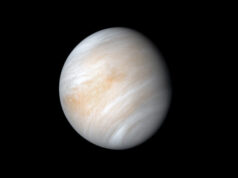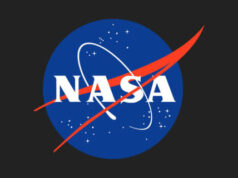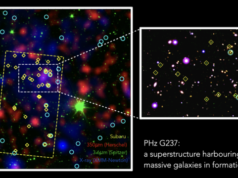The ice giant Uranus’ unusual attributes have long puzzled scientists. All of the planets in the solar system revolve around the sun in the same direction and in the same plane, which astronomers believe is a vestige of how our solar system formed from a spinning disc of gas and dust. Most of the planets also rotate in the same direction, with their poles orientated perpendicular to the plane in which the planets revolve. However, uniquely among all the planets, Uranus is tilted at about 98 degrees.
Instead of thinking about the reality of stars spread in all directions and at various distances from the Earth, it is easier to understand by envisioning the celestial sphere. To picture what the celestial sphere is, look up at the night sky and imagine that all of the stars you see are painted on the inside of a sphere surrounding the solar system. Stars then seem to rise and set as the Earth moves relative to this “sphere.” As Uranus rotates and orbits the sun, it keeps its poles aimed at fixed points with relation to this sphere, so it appears to roll around and wobble from an Earth observer’s perspective. Uranus also has a ring system like Saturn’s, and a slew of 27 moons that orbit around its equator; thus, they are also tipped relative to the plane of the ecliptic. The origins of Uranus’ unusual set of properties has now been explained by a research team led by Professor Shigeru Ida from the Earth-Life Science Institute (ELSI) at Tokyo Institute of Technology. Their study suggests that early in the history of our solar system, Uranus was struck by a small, icy planet roughly one to three times the mass of the Earth, which tipped the young planet over and left behind its idiosyncratic moon and ring system as a smoking gun.
The team came to this conclusion while constructing a novel computer simulation of moon formation around icy planets. Most of the planets in the solar system have moons of different sizes, orbits, compositions and other properties, which scientists believe can help explain how they formed. There is strong evidence that Earth’s own single moon formed when a rocky Mars-sized body hit the early Earth almost 4.5 billion years ago. This idea explains a great deal about the Earth and the moon’s composition, and the way the moon orbits Earth.
Scientists expect such massive collisions were more common in the early solar system; indeed, they are part of the story of how all planets are thought to form. But Uranus must have experienced impacts that were very different from Earth simply because Uranus formed so much farther from the sun. Since the Earth formed closer to the sun, where the environment was hotter, it is mostly made of what scientists call ‘non-volatile’ elements, meaning they don’t form gases at normal Earth-surface pressures and temperatures; they are made of rock. In contrast, the outermost planets are largely composed of volatile elements like water and ammonia. Even though these are gases or liquids under Earth-surface temperatures and pressures, at vast distances from the sun, they are frozen into solid ice.
According to professor Ida and his colleagues’ study, giant impacts on distant icy planets would be completely different from those involving rocky planets, such as the impact scientists believe formed Earth’s moon. Because water ice forms at low temperatures, the impact debris from Uranus and its icy impactor would have mostly vaporized during the collision. This may have also been true for the rocky material involved in Earth’s moon-forming impact, but in contrast, this rocky material had a very high condensation temperature, meaning it solidified quickly, and thus Earth’s moon was able to collect a significant amount of the debris created by the collision due to its own gravity.
Find your dream job in the space industry. Check our Space Job Board »
In the case of Uranus, a large, icy impactor was able to tilt the planet, give it a rapid rotation period (Uranus’ day is presently about 17 hours, even faster than Earth’s), and the leftover material from the collision remained gaseous longer. The largest mass body, which would become Uranus, then collected most of the leftovers, and thus, Uranus’ moons are small. To be precise, the ratio of Uranus’ mass to Uranus’ moons’ masses is greater than the ratio of Earth’s mass to its moon by a factor of more than 100. Ida and colleagues’ model beautifully reproduces the current configuration of Uranus’ satellites.
Professor Ida says, “This model is the first to explain the configuration of Uranus’ moon system, and it may help explain the configurations of other icy planets in our solar system such as Neptune. Beyond this, astronomers have now discovered thousands of planets around other stars, so-called exoplanets, and observations suggest that many of the newly discovered planets known as super-Earths in exoplanetary systems may consist largely of water ice, and this model can also be applied to these planets.”
Provided by: Tokyo Institute of Technology
More information: Shigeru Ida et al. Uranian satellite formation by evolution of a water vapour disk generated by a giant impact. Nature Astronomy (2020). DOI: 10.1038/s41550-020-1049-8
Image: Uranus is uniquely tipped over among the planets in our Solar System. Uranus’ moons and rings are also orientated this way, suggesting they formed during a cataclysmic impact which tipped it over early in its history.
Credit: Lawrence Sromovsky, University of Wisconsin-Madison/W.W. Keck Observatory/NASA











